A new trove of records could help many reconnect with their Irish roots. They come from a surprising source
For more than a century, many people of Irish descent have faced a daunting predicament when searching for details about their families’ pasts.
A 1922 fire at the Public Records Office in Dublin at the outset of Ireland’s Civil War destroyed census, vital and probate records.
While some records have been recovered over the years, the devastating fire left behind a genealogical void that’s stymied many a would-be family history sleuth.
“It’s, unfortunately, one of the biggest barriers to Irish family history research,” says Crista Cowan, corporate genealogist for Ancestry.
But officials from the genealogy company hope a newly digitized trove of records — spanning more than 160 years — will be the key to unlocking many family history puzzles.
The 1.6 million records come from what might sound like a surprising source: the archives of Ireland’s famed Guinness brewery.
And Ancestry says they’ll be viewable free of charge on its site for the next two weeks, from March 8-22 (including St. Patrick’s Day on March 17, if you want to try your luck then).
The collection is particularly significant, Cowan says, due to the long length of time it covers.
“No matter when your family left (Ireland), there is a possibility that you could make a connection. Or even if you have family that stayed, there’s a possibility that you can make a connection in this collection, and I just think that’s a huge boon for people,” Cowan says.
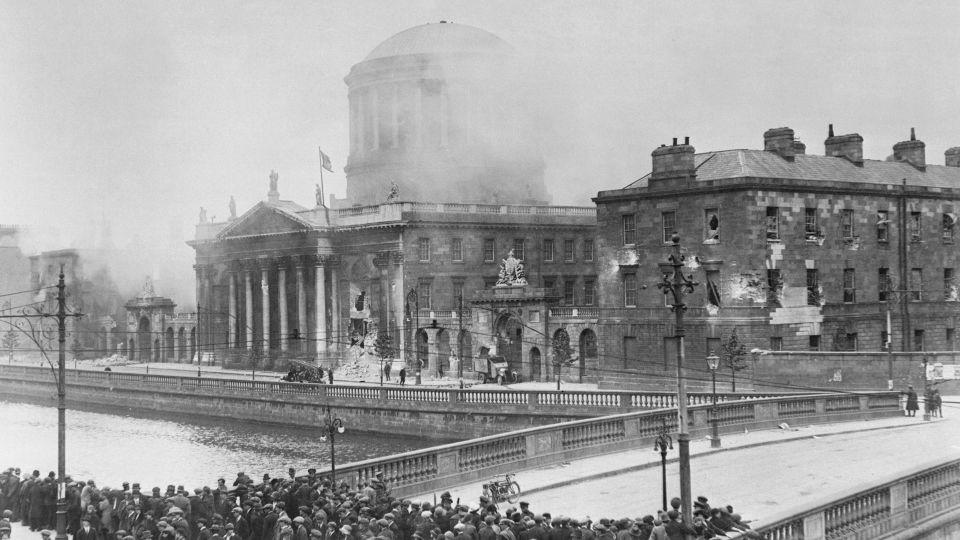
What the records reveal
The digitized records fall into two categories: employee records and trade ledgers.
The employee records date from 1799 to 1939, according to Ancestry, and include workers’ names and, in some cases, details about their home addresses, occupations, spouses, children and marriages.
“It’s almost like a census substitute,” Cowan says.
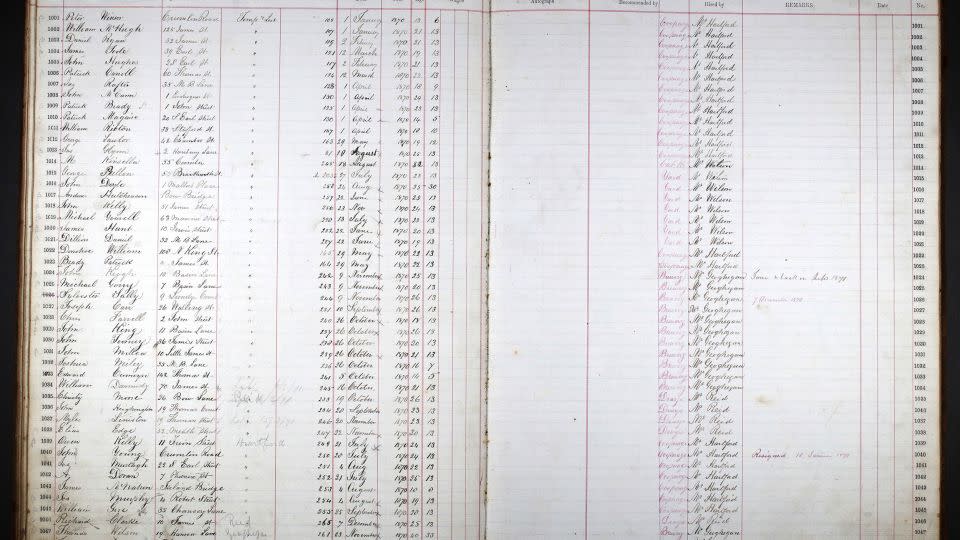
Nearly 250,000 pages of trade ledgers spanning from 1860 to 1960 provide a different perspective, including details on sales to individual pubs across the United Kingdom and Ireland. Records include details on pub owners, such as their names, addresses, and dates of purchase.
“Also, it just gives us a really interesting perspective into pub culture throughout the UK, which I find fascinating,” Cowan says.
And those records, too, could lead some to learn new details about their families.
As a descendant of Irish immigrants and as someone who’s coached amateur genealogists on how to break through “brick walls” that are blocking them in their searches, Cowan knows firsthand how challenging Irish family research can be.
“Forty million Irish descendants live outside Ireland, and particularly a large percentage of those that live in the United States are seeking or craving that connection to the homeland,” Cowan says.
Making those connections, she says, can be much harder than it sounds.
“To be able to actually figure out which John O’Brien is your great-great grandfather, out of the 350 of them that lived in an area of Ireland where you think your family might be from, becomes a real challenge,” Cowan says.
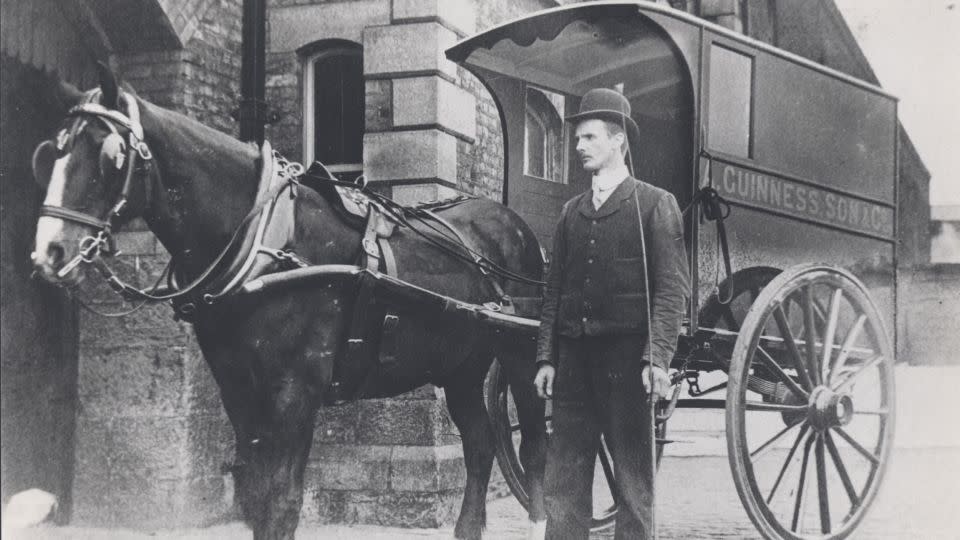
A name alone won’t solve the puzzle. But additional details around a name might.
“And that’s one thing that this particular set of records does. … I’m excited to see what kind of breakthroughs and new discoveries people are going to make,” Cowan says.
The Guinness brewery has a storied past
Researchers combing through the newly released files might stumble upon some celebrity connections, too.
According to Ancestry, actor Liam Neeson, comedian Graham Norton and U2 frontman Bono all have connections to the brewery in their families’ pasts. It’s no wonder, given that at one point 1 in 30 residents of Dublin worked for Guinness.
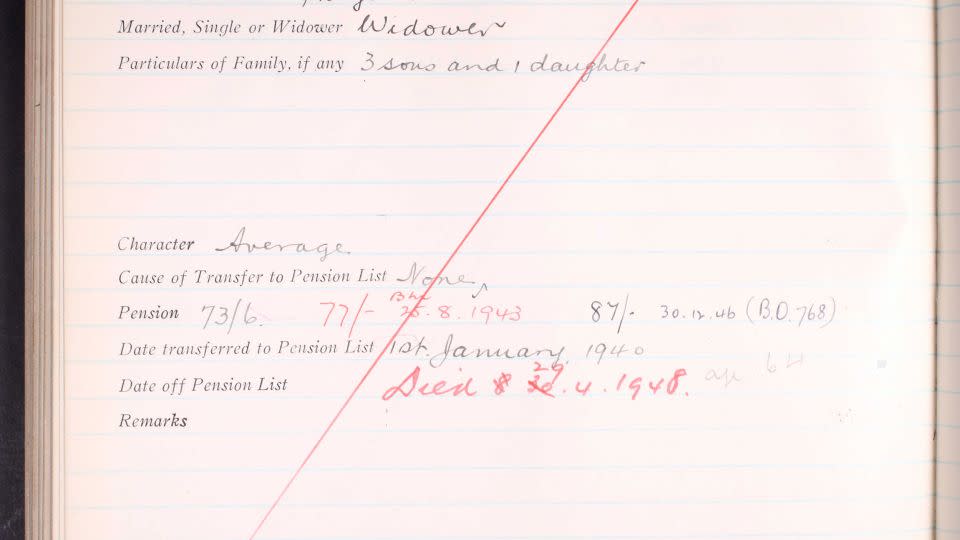
Arthur Guinness signed a 9,000-year lease on a Dublin brewery in 1759. By 1880, the brewery at St. James’s Gate was the largest in the world. And it was the largest private employer in the city for almost a century.
“Guinness is at the heart of Irish history. … We’re excited to be bringing to life these archives in a new and engaging way for consumers,” said Eibhlin Colgan, archive manager at the Guinness Storehouse, in a written statement.
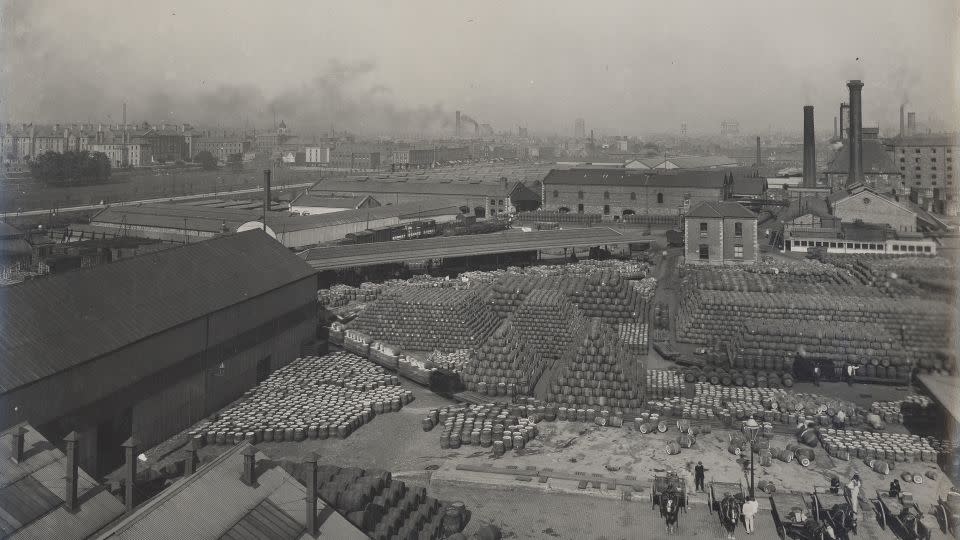
Workers generally entered the Guinness workforce at age 14, according to a description of the records on the company’s website. They began their careers as messengers, lab assistants or “boy labourers.”
“Competition to get a job at the Brewery was stiff,” Guinness says, with applicants required to provide a school reference and proof of their age, pass a medical exam and sit for a final written exam. Those who landed a job would generally stay at the company until retirement.
One reason why: perks of working for the brewery included subsidized meals, free medical care, holidays, bonuses, pensions and a free pint of Guinness per day to employees over age 21.
“It was said that Guinness would look after you from ‘womb to tomb,‘” one official description of the records notes, “as burial allowances were provided by the company and, at one point, there was a midwife on staff to assist with childbirth.”
Now this trove of digitized documents is taking that idea beyond the grave, helping descendants of Guinness workers unearth forgotten chapters of their families’ stories — decades and even centuries after their deaths.
For more CNN news and newsletters create an account at CNN.com

